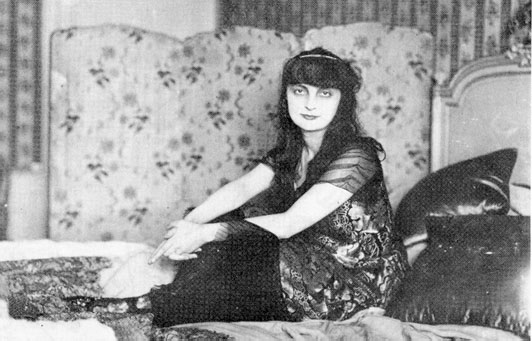Anna Elisabeth de Brancovan was born in Paris on 15 November 1876 to a fifty-year-old Romanian expatriate, Prince Grégoire Bassaraba de Brancovan, and to Princess Rachel Musurus, twenty-one years his junior, an accomplished pianist of Greek origins who had been born in Constantinople (today Istanbul) and reared in London. Along with her older brother, Constantin, and her younger sister, Hélène, Anna de Brancovan led a privileged life. Educated almost entirely at home, she spoke English and German in addition to French and was raised to appreciate the arts—particularly music and poetry. The family spent the winter in Paris and the rest of the year at their estate, the “Villa Bassaraba” in Amphion, near Évian on the south shore of Lake Geneva. Noailles’ poetry bears witness to a preference for the beauty and the exuberance of the natural world over the urban environments in which she subsequently had to live.
At barely ten years old, in October 1886, Anna de Brancovan lost her father. In the poems of Victor Hugo’s Les Contemplations (1856), dedicated to his drowned daughter Léopoldine, she soon discovered a language that would enable her both to express her experience of loss and to overcome it through artistic representation. With her marriage to Count Mathieu de Noailles on 18 August 1897, Anna de Brancovan became a member of one of the most prominent families of the old French nobility. On 18 September 1900 she gave birth to her only child, Anne-Jules, a boy.
In 1901 Noailles published her first collection of poems, Le Coeur innombrable (The Innumerable Heart), which had an immediate and resounding success. After her second collection of poetry, L’Ombre des jours (The Shadow of Days, 1902), Noailles published three novels, La Nouvelle Espérance (New Hope, 1903), Le Visage émerveillé (The Marveling Face, 1904), and La Domination (Domination, 1905). In 1903, she began a lifelong, tormented friendship with the novelist and essayist Maurice Barrès, which lasted until the death of Barrès in 1923. Published in 1907, Les Éblouissements (Dazzling) is the first volume of Noailles’ mature poetry and the one that had the greatest immediate impact. Noailles’ next collection, Les Vivants et les Morts (The Living and the Dead, 1913), appeared shortly before the Great War.

Plagued by lifelong health problems, after 1911 Noailles often remained in her bedroom, where she wrote and received guests. Present-day visitors to the Musée Carnavalet in Paris can see, facing the display of Proust’s bedroom, a reconstitution of the modest room in which Noailles’s friendship with such figures as Jean Cocteau and Colette developed. After the War, Noailles published Les Forces éternelles (1920). In 1921, the French Academy awarded her its Grand Prix de Littérature (Grand Prize for Literature); the following year she became the first female member of the Belgian Royal Academy of French Language and Literature–a seat that was held subsequently by Colette and Cocteau (now by Marie-Claire Blais). On 11 January 1931, she was the first woman to receive the high rank of “Commander” in The Legion of Honor. During the last months of 1923 she lost her mother and two of her most intimate friends, including Barrès. From then on she composed poems concentrating near exclusively on death, most of which were collected in L’Honneur de souffrir (The Honor of Suffering, 1927). In 1930, she published Le Livre de ma vie, an autobiography spanning her childhood and adolescence, which she planned on completing in a second volume. Anna de Noailles died in Paris on 30 April 1933.